East Iceland has all kinds of museums which tell the rich history that this part of the country has.
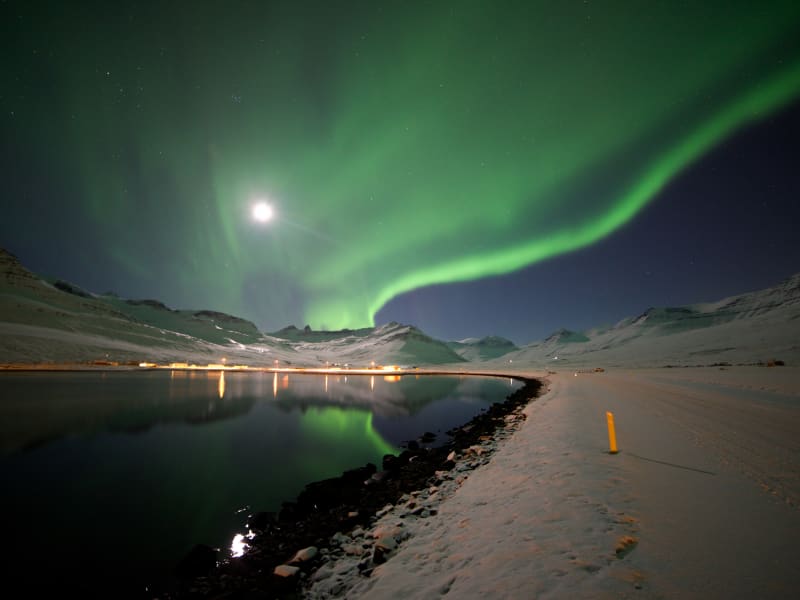
Auroras Iceland
In a small village on the east coast of Iceland, The Icelandic House of the Northern Lights opened in May 2016. You can enjoy the northern lights exhibition in Wathne´s House (Auroras Iceland). The exhibition is based on the magnificent photos shot by Jónína and Jóhanna and is called "Dance With the Mountains." The photos are shot in Fáskrúðsfjörður where majestic mountains circle the fjord and make the northern lights experience unique.
Everyone is welcome to enjoy this wonderful exhibition.
View
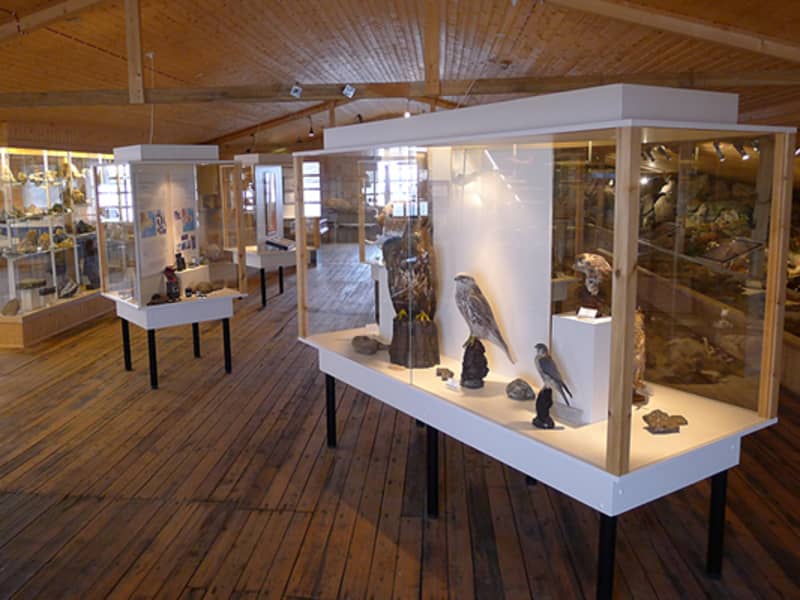
Museum of Natural History Nordfjordur
A new and interesting museum which displays the best of Icelandic nature; Icelandic mammals, shellfish, birds, insects and stone collection as well as specimens from the East Icelandic flora.
Hours of Operation: June, July, and August: 13:00 - 17:00 daily or by arrangement with the manager, tel. 470 9063
View
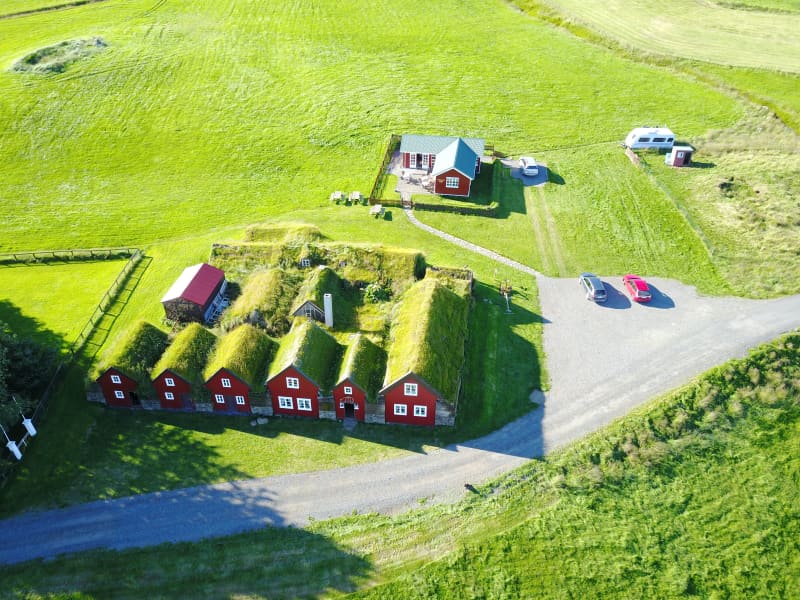
Bustarfell Museum
In Hofsárdalur in Vopnafjörður you will find the old family farm Bustarfell, a quaint, centuries old Icelandic turf house with red gables and a grass-grown roof which is now a museum. Bustarfell is one of the oldest and best preserved turf houses in Iceland. In 1532, the farm was bought by Árni Brandsson and his wife Úlfheiður and has been owned by their descendants ever since.
A visit to the museum at Bustarfell is a journey through the history of farming in Iceland and changes in lifestyle from the beginning of the 18th century to the mid-20th century. When walking through the museum, you feel as if the inhabitants have only just left the house. Three kitchens from different eras are showcased, as well as other artifacts from around the farm which show how technology has developed.
Hjáleigan Café is located next to the museum, and a hiking path leads to the rock Álfkonusteinn, source of a local folktale.
Opening hours: 10-17 every day from June 1st to August 31st.
View
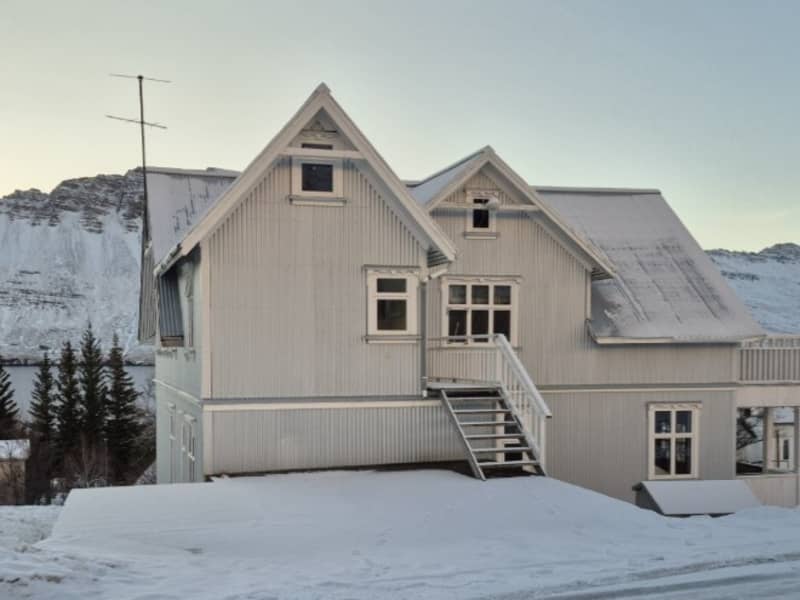
Fjarðabyggð Cultural Center
Menningarstofa Fjarðabyggðar (Fjardabyggd Cultural Center) was established in 2017, and its role is to support and promote cultural activities in Fjarðabyggð. Menningarstofa workss with people in cultural life and helps them and encourages good work.
Menningarstofa Fjarðabyggðar is committed to ensuring all residents´access to culture and arts, regardless of residence, origin, and socioeconomic status. Menningarstofa is connected with grassroots organizations in culture, such as amateur theatre companies and choirs, and promotes good access to local housing events.
Menningarstofa connects theatre, primary and music schools, museums, and other municipal institutions with professionals from creative industries. Menningarstofa works to increase access to innovative learning and work in collaboration with educational directors, sports and leisure representatives, and the Fjarðabyggð Museum-Institute. Furthermore, the Menningarstofa encourages creative processes in schools, cultural and leisure activities in Fjarðabyggð.
Tónlistarmiðstöð Austurlands is operated by Menningarstofa Fjarðabyggðar. Its Concert Hall, located in Eskifjörður, is very popular for most types of concerts. The music center is well equipped, and the house´s soundtrack is excellent. but the design of the building creates visual and acoustic intimacy between performers and concert goers.
The place is also very convenient for various exhibitions, any conference, and meetings. However, the Events of Tónlistarmiðstöð Austurlands are not confined to the hall in Eskifjörður at all, as Menningarstofa Fjarðabyggðar is responsible for music-related events in all of Fjarðabyggð.
View
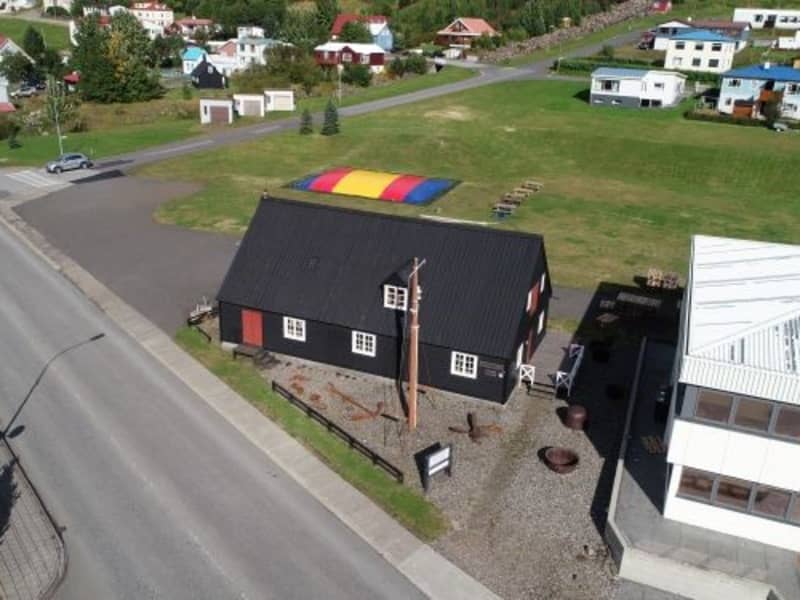
Maritime Museum
The museum mostly exhibits objects and utensils relating to fishing and seafaring in general. It also displays various reminders of local trade, industry, and medicine from times past. The collection is in a commercial building, “Gamla búð”, built in 1816.
Hours of Operation: June, July, and August: 13:00 - 17:00 daily or by arrangement with the manager, tel. 470 9063
View
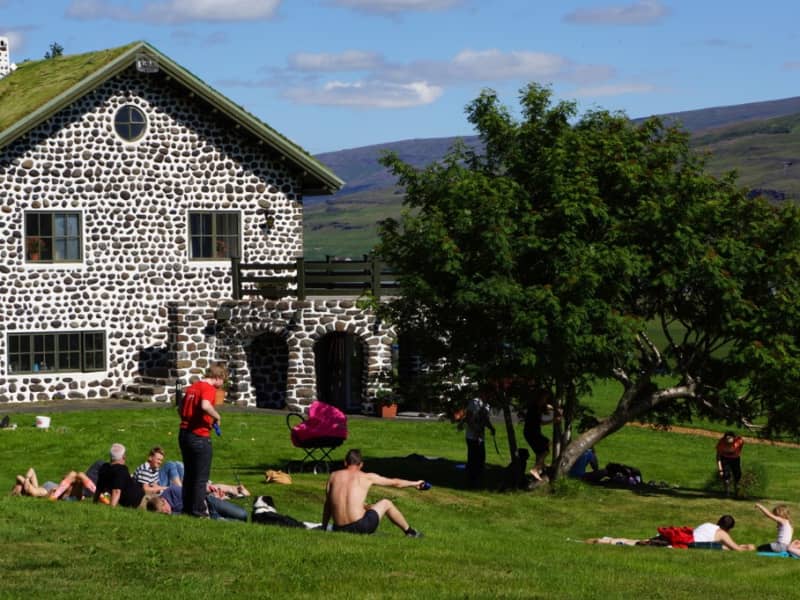
Skriðuklaustur, Centre of culture & history
Skriðuklaustur is the former home of the famous author Gunnar Gunnarsson (1889-1975). Since 2000 it has been open as a centre of culture & history with various activities and exhibitions. It houses a museum about the author with personal guidance about his life and career as well as the adventure of building a mansion in Fljotsdalur valley in 1939.
The house itself is one of Iceland’s most treasured buildings, donated to the Icelandic nation by the author in 1948. It was designed by the German architect Fritz Höger.
At Skriðuklaustur, you can also have a look at the ruins of a medieval Augustinian monastery from the 16th century which was excavated at the beginning of the 21st century. The ruins are accessible all year round, close to the author's home. The exhibition about medieval life and the excavation can be found in the cultural centre which also houses the restaurant Klausturkaffi.
Opening hours
April - May: Open daily 11am - 5pm June - August: Open daily 10am - 5pmSeptember - October 13th: Open daily 11am - 5pm
View
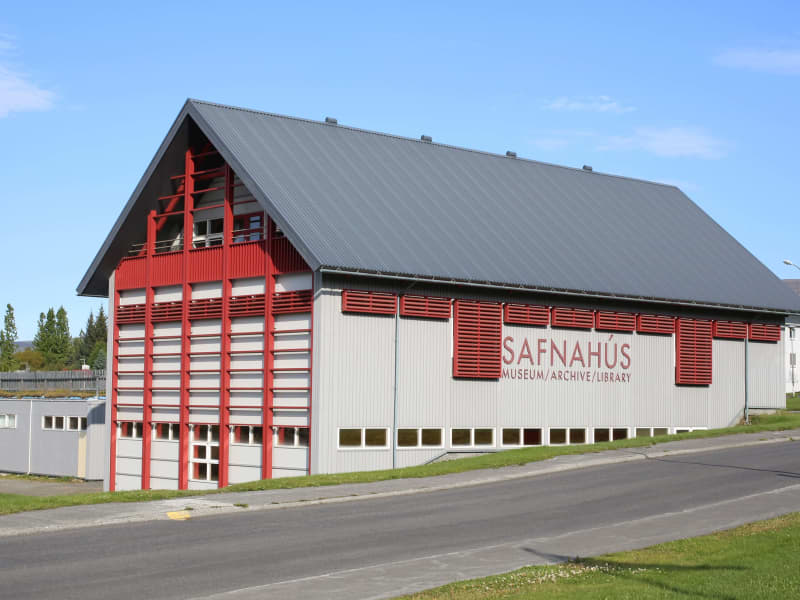
East Iceland Heritage Museum
East Iceland Heritage Museum (Minjasafn Austurlands)
The East Iceland Heritage Museum preserves and presents the cultural history, traditions, and community life of the region. The museum features two permanent exhibitions: Reindeer in East Iceland and Sustainable Unit. In addition, temporary and smaller thematic exhibitions are hosted throughout the year. The current special exhibition is titled Landnámskonan – The Settlement Woman.
Landnámskonan – The Settlement Woman
Two richly adorned women from the Viking Age are the focus of this unique exhibition: One is a chieftainess whose grave was excavated in 2021 at Fjörður, Seyðisfjörður, the other is the mysterious Fjallkonan, whose remains were discovered in a cave at Vestdalsheiði, above Seyðisfjörður, in 2004. Both finds date from around the year 950, suggesting that these women lived at the same time. The exhibition draws on research conducted on these archaeological discoveries to shed light on the lives and work of women during the Settlement period. The exhibition is a collaboration between the East Iceland Heritage Museum, Antikva, the University of Iceland Research Center inEast Iceland, and the National Museum of Iceland.
Reindeer in East Iceland
This exhibition explores the life and survival of reindeer in East Iceland, the natural and human-related threats they face, reindeer research, hunting history, and the various uses of reindeer products in food and craft. Visitors can watch the film Á hreindýraslóðum - On the Reindeer Trail by Eðvarð Sigurgeirsson (from the 1940s), hear stories fromreindeer hunters, and view numerous related photographs and artefacts.
Sustainable Unit
The exhibition’s title refers to how traditional Icelandic farms had to be self-sufficient—providing food, clothing, tools, and shelter. On display are various objects that tell the story of rural life in East Iceland up to the mid-20th century. A key item is the traditional baðstofa - living and sleeping room from the farm Brekka in Hróarstunga.
Opening Hours
September – May
Tuesday to Friday: 11:00–16:00
June – August
Monday to Saturday: 10:00–18:00
From June 25 to July 31, 2025, the museum will stay open until 20:00 on Wednesdays, offering live music and local tastings.
Visits outside regular hours can be arranged upon request.
View
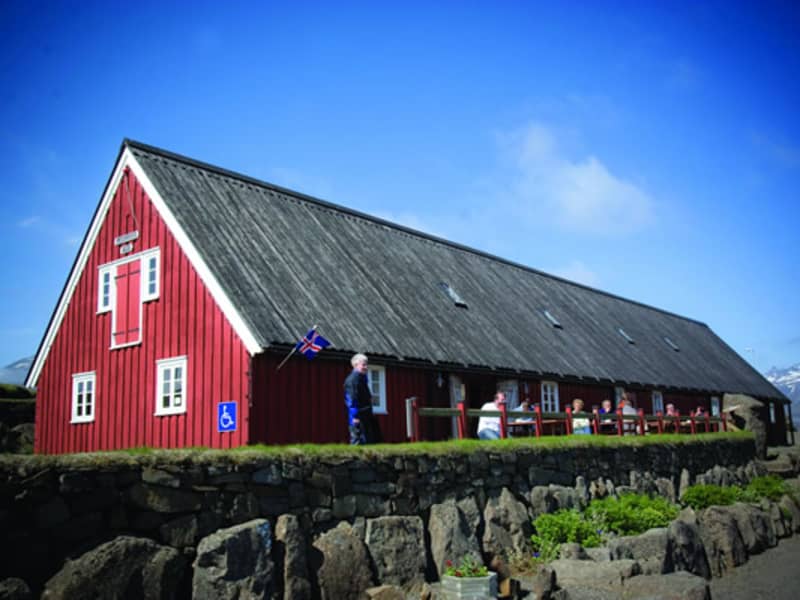
Cultural Center - Langabúð
Langabúð cafe is located in the oldest building in Djupivogur, dating back to 1790. The cafe offers a wide variety of homemade goods such as soups, bread with salmon and smoked lamb, cappuccino, espresso, latte, and delicious cakes. The menu has a variety of vegan and gluten free choices. You can also try out a selection of Icelandic beers and spirits.
Langabúð is Djupivogur's cultural center, housing museums and exhibitions, and is the corner stone in the town's culture. The museums exhibit the life and work of Rikardur Jonsson, a sculptor and artist, and a memorial of the politician Eysteinn Jonsson and his wife, Solveig Eyjolfsdottir. The building's loft houses a heritage museum.
The cafe offers a wide variety of homemade goods such as soups, bread with salmon and smoked lamb, cappuccino, espresso, latte, and delicious cakes. The menu has a variety of vegan and gluten free choices. You can also try out a selection of Icelandic beers and spirits.
Hours of Operation: Summer: May 15th – September 15th, Every day: 11:00-18:00 Winter: Please contact us for opening hours. Admission: ISK 500
View
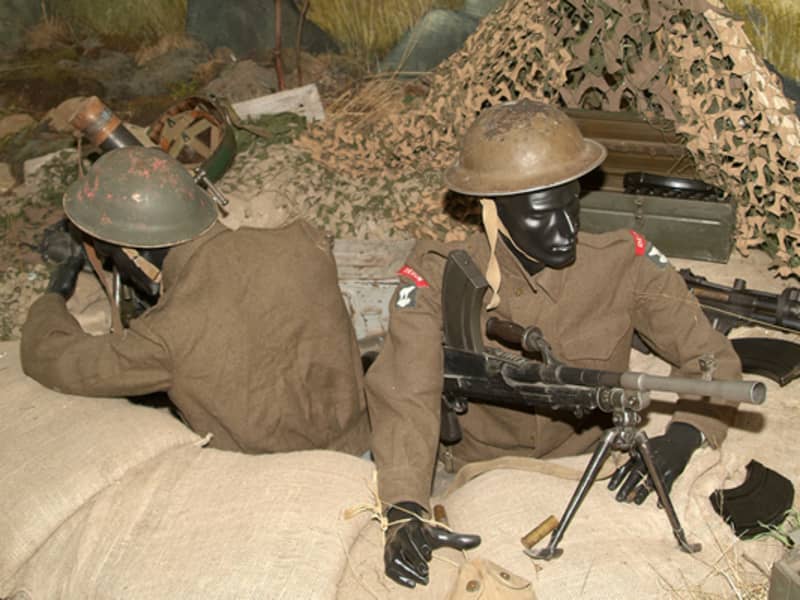
Wartime Museum
At the Icelandic Wartime Museum, you can travel back to the days of the Second World War and the military occupation of Reyðarfjörður. The museum gives a vivid insight into life during the war in a country which has never had an army or been at war - with this one exception. The focus is on the impact of the occupation on the local population. On the first of July, there is a festival in memory of this unique event in Icelandic history.
View
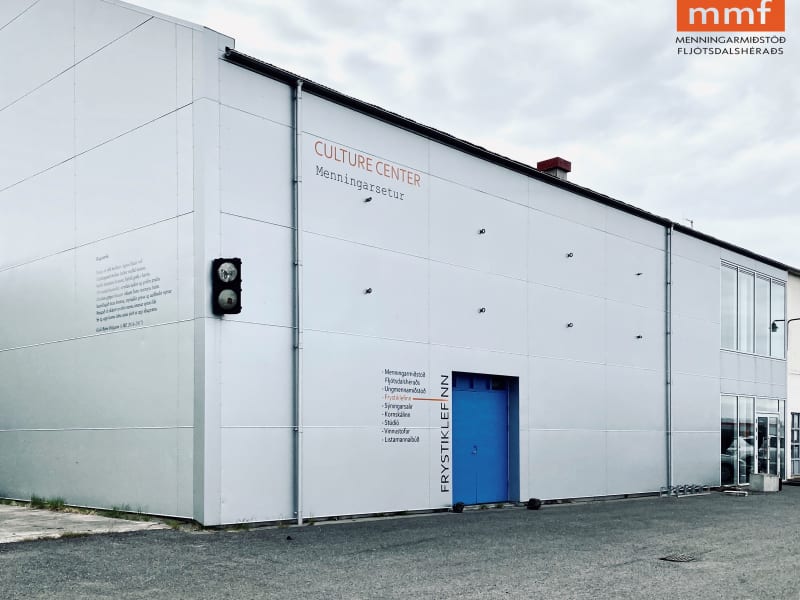
Sláturhúsið
The Center for Art and Culture in Fljotsdalsherad (MMF) is located in Slaturhusid, Egilsstadir. As a Center for Performing Arts we are inspired every day to create, share, teach, excite and perform for our community. Although performing arts are our main focus we also host art exhibitions.
Director of MMF is Ragnhildur Asvaldsdottir
View
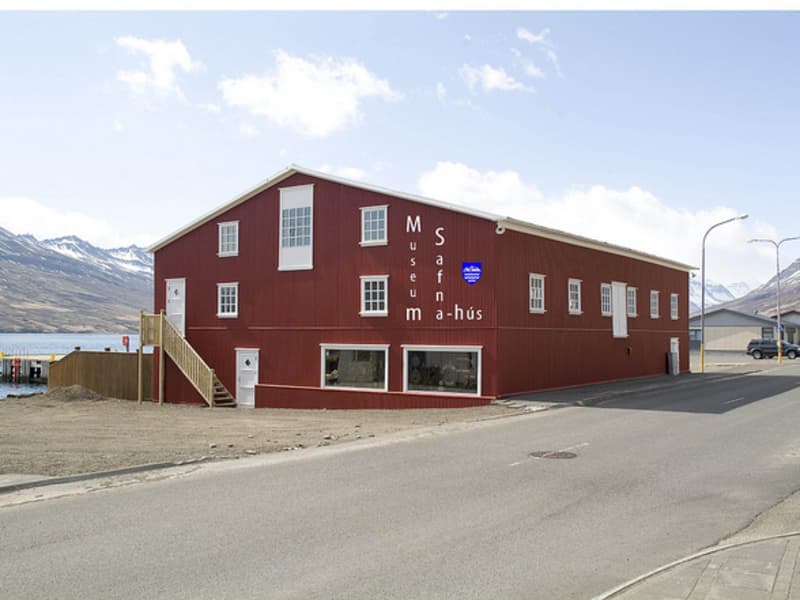
Safnahúsið in Nordfjordur
The museum building "Safnahúsið" in Nordfjordur includes 3 museums:
Tryggvi Collection An impressive introduction to the art of painter Tryggvi Ólafsson from Nordfjordur.The exhibition offers a cross-section of the well-known artist´s career.
Jósafat Hinriksson MuseumExhibition of Jósafat Hi nriksson´s collection and maritime and handicraft arts, located in an old graceful warehouse.
The Natural History Museum Beautiful collection of Icelandic birds, shellfish and stones.
Safnahúsið is open every day between June 1st - August 31st from 13:00 - 17:00.
View

Tryggvi Ólafsson Art Museum
Tryggvi Ólafsson was born in 1940 in Norðfjörður. He studied at the Icelandic School of Fine Arts and Crafts 1960-61 and at the Royal Academy of Arts in Copenhagen 1961-66.
Tryggvi Ólafsson is one of Iceland's best-known contemporary artists
Open every frá 1. june to 31. august. Opening hours: 13:00 - 17:00.Admission Adults (age 16 - 67)...............kr. 400.Students..................................kr. 200.Grups (10+) pr./per................kr. 300.Children (age 0 - 15).............free.Senior citizens (age 67+).....free.ICOM members.....................free.From 1.september to 31. may by appointment .
View
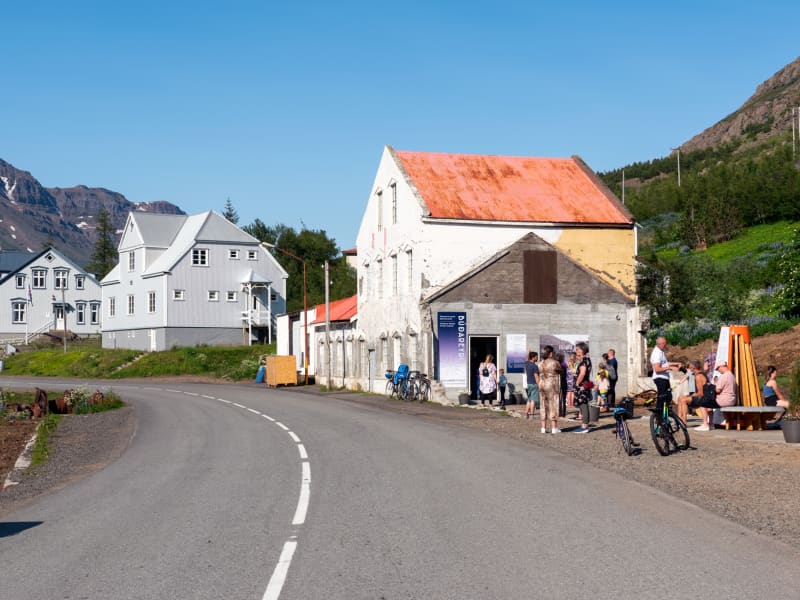
Technical Museum of East Iceland
Join us in the Old Mechanical Shop for a journey through history and innovation at our exhibition „Búðareyri – stories of transformation“. The exhibition tells us the history of Búðareyri, the part of Seyðisfjörður that was hit by a major landslide inDecember 2020. On the exhibition we combine innovative multimedia solutions with traditional technology offering a rich bilingual experience for visitors of all ages.
In the Harbour garden you can discover the rich history of women in Seyðisfjörður around 1900 at our outdoor exhibition„Working Women“. The exhibition explores the range of different jobs held by women and their significant economic contributions to society during this immense period of change in Iceland from 1880 to 1920.
Opening hours at the old mechanical shop
15 May – 30 June: Mondays – Saturdays, 13 – 17
July 1 – August 31: Every day from 10 – 17
September 1 – 15: Mondays – Saturdays, 13 – 17Winter: By agreement: tekmus@tekmus.is
View

Randulffs-sjóhús
Randulff´s Sea House is located by the sea in Eskifjördur. It is during the summer months 2011 and Randulff´s restaurant serves dinner according to a traditional local menu in a unique atmosphere. Randulff´s seahouse is also open for groups by arrangement.
Randulff's Sea House is open during the summer from 12 - 21 every day of the week. The chefs have made a marvelous menu that focuses on fresh and local ingredients.
Randulff´s Sea House is a beautifully preserved shore-building towards the eastern end of Eskifjörður. Today this fine old house preserves both many artifacts and a lingering atmosphere from the days when the establishment of a herring fishery led to the first real growth of the fjord towns of East Iceland in the late 19th and early 20th century.
Built by Norwegian Peter Randulff in 1890, it provided a station for landing and processing herring caught within the fjord through to 1930 when there was no longer sufficient herring coming into the fjord to sustain the fishery. When herring finally returned to the seas off East Iceland in the late 1950s the fishery involved large ships fishing further off-shore and landing their catches at ports like Siglufjörður, Húsavík, and Vopnafjörður in the north. As a result, for the next 75 years, this sturdy old sea-house remained closed.
In 1980 The East Iceland Maritime Museum (Sjóminjasafn Austurlands) became a part-owner of Randulff´s sea-house leading to the restoration of both the exterior of the building and the adjoining jetty. In 2003 the society became the sole owner of the house and in 2008 was re-opened in co-operation with the nearby Mjóeyri guesthouse and tourism centre. It has since been available both as an extension of the excellent Eskifjörður maritime museum and as a place where groups are able to sample traditional Icelandic fare in a setting that has changed little in the past one hundred years. It also provides the base from which Mjóeyri guesthouse rents out small boats with outboard motors for recreational fishing within the fjord where cod and haddock are still plentiful.
In 1980 The East Iceland Maritime Museum (Sjóminjasafn Austurlands) became a part-owner of Randulff´s sea-house leading to the restoration of both the exterior of the building and the adjoining jetty. In 2003 the society became the sole owner of the house and in 2008 was re-opened in co-operation with the nearby Mjóeyri guesthouse and tourism centre. It has since been available both as an extension of the excellent Eskifjörður maritime museum and as a place where groups are able to sample traditional Icelandic fare in a setting that has changed little in the past one hundred years. It also provides the base from which Mjóeyri guesthouse rents out small boats with outboard motors for recreational fishing within the fiord where cod and haddock are still plentiful.
View
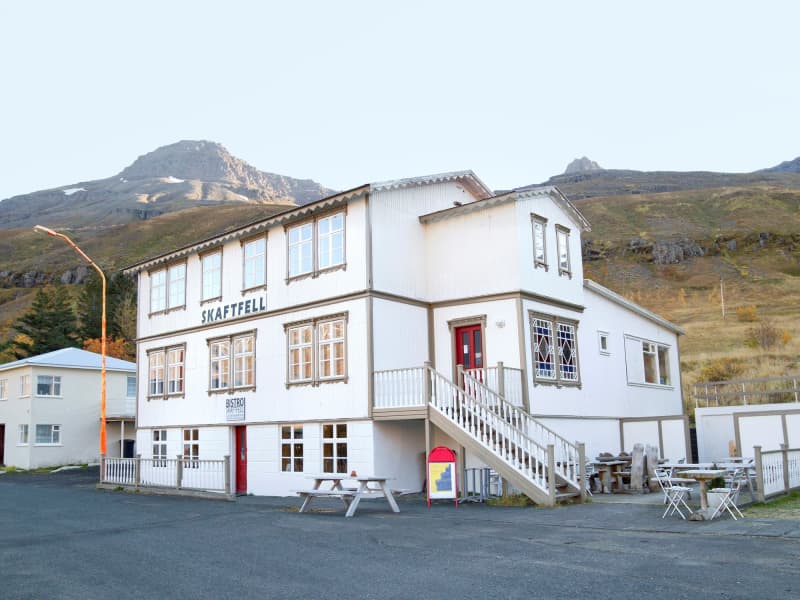
Skaftfell Center for Visual Art
Skaftfell Center for Visual Art was founded in the year 1998 by a group of art enthusiasts, the Skaftfell Group. The Skaftfell Group was formed by friends of the artist Dieter Roth (1930-1998) who had regularly spent time in Seyðisfjörður during the last decade of his life in Seyðisfjörður and had a strong influence on the town´s artistic life.
The art center is situated in Austurvegur 42 in Seyðisfjörður, in a grand house built in 1907, which was donated to the Skaftfell Group by Garðar Eymundsson and Karólína Þorsteinsdóttir. Today the building contains the Skaftfell gallery and bookshop on the middle floor, an artist residency apartment on the top floor, and the Skaftfell Bistro and library on the ground floor.
Skaftfell´s role is to present, discuss and encourage the development of contemporary art. The art center is an importan meeting point for artists and locals, and its activities involve exhibitions and events throughout the year, an international artist residency program and an art education program. Skaftfell is also the guardian of a minuscule house in Seyðisfjörður, Geirahús, previously owned by the local naive artist Ásgeir Emilsson (1931-1999). Now a tiny museum, Geirahús can be visited by appointment. Another artwork to visit is Tvísöngur , a sound sculpture on the hills of the fjord, developed by Lukas Kühne with Skaftfell in 2012.
In 2013 Skaftfell received the Icelandic Eyrarrósin award for outstanding cultural leadership in a rural area.
For opening hours please visit our website skaftfell.is
For more information please contact us: skaftfell@skaftfell.is
View
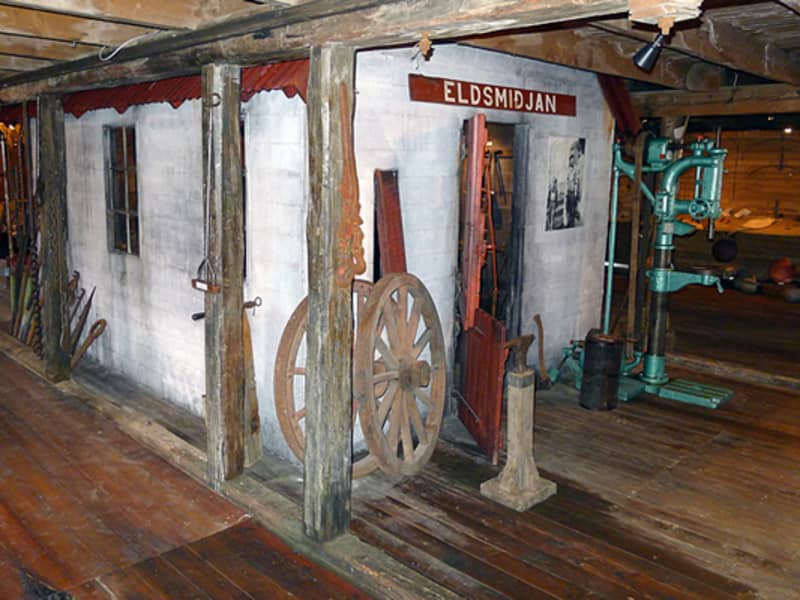
The Jósafat Hinriksson’s Maritime Museum
The museum displays interesting objects relating to fishing, iron work, boat building and the old ways of the Icelandic people. It displays a replica of Josafat’s fathers old iron workshop where Josafat studied and started his carrier.
Hours of Operation: June, July and August: 13:00 - 17:00 daily or by arrangement with manager, tel. 470 9063
View
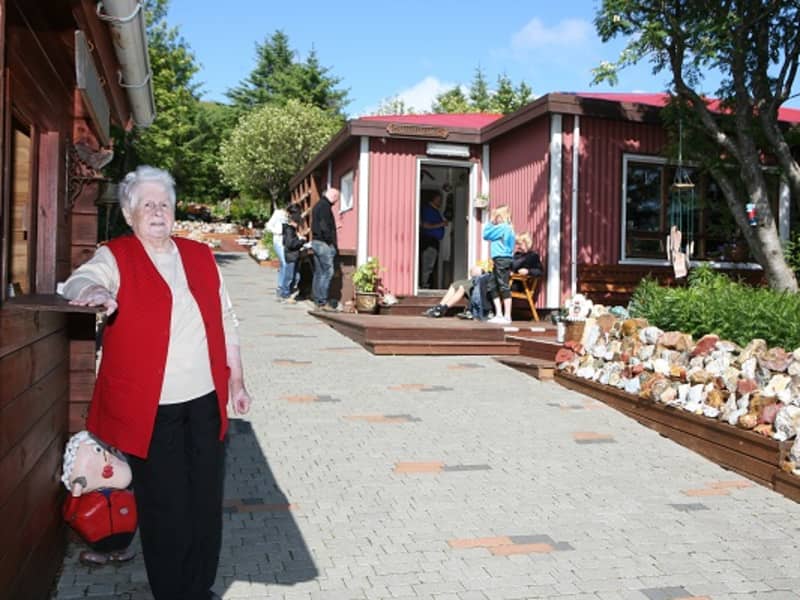
Steinasafn Petru
Ljósbjörg Petra María Sveinsdóttir was interested in stones all her life and started to collect them in earnest in 1946.
Most of her stones were found in Stöðvarfjörður and other places in East Iceland because Petra didn´t go much looking for stones in other parts of the country.
In 1974, Petra decided to open her home for all those that wished to look at her stones. Petra´s receives many visitors each year and it has become one of the most popular tourist destinations in East Iceland.
It´s obvious to all those that visit Petra´s, that she was an efficient stone collector but not many people know that she collected more than stones. Petra collected marked pens, cups, and numerous other small paraphernalia and for most of her life, she collected eggs, shells, and conches.
For sure, Petra´s house has slowly acquired the appearance of a nature museum, but first and foremost, it´s a home.
Open from May 1st to October 31st, seven days a week from 09:00 am to 5:00 pm.
Kaffi Sunnó
In the year 2015, an old dream came true when Kaffi Sunnó was opened. The guests can buy delicious soups and bread, hot and cold drinks and something sweet.
Open from May 1st to October 31st, seven days a week from 09:00 am to 5:00 pm.
View

French sailors in Iceland
The avant-garde exhibition in The French Museum in Fáskrúðsfjörður is the newest of Fjarðabyggð' s museums and collections. This museum is located in two stately buildings, the Doctor's House and the French Hospital as they are called, built by the French fishermen around 1900. However, the main attraction of the exhibition is situated in a tunnel that connects the two buildings. The entrance to the museum is from the hotel reception area in the Doctor's House.
In the museum, the interesting history and legacy of the French sailors in Iceland is shown by means of the latest multimedia technology.
The French sailors maintained a station at Fáskrúðsfjörður from the mid-19thcentury till the First World War, with the number of French sailing ships off Iceland peaking at between 200 and 300. However, the history of French cod fishing off Iceland goes back even further, all the way to the 17th century.
During this long history, many ships never made it back to their home country. It is estimated that up to 400 of them were lost around Iceland, along with 4,000-5,000 seamen. Down by the French graveyard, a monument has been erected in honour of these heroes of the sea who were subjected to hard work, dampness and cold, not to mention accidents.
Their fishing operations were highly important for villages on the northern French coast; for example, in Dunkerque in the 1860s, approximately 6,000 people were employed in relation to fishing off Iceland. These operations were also significant for other villages, such as Paimpol and Gravelines.
The renovation of the French heritage buildings, one of the largest historical restoration outside the capitol area, was finished in the summer of 2014. The five French buildings play a substantial role in local culture and society in Fáskrúðsfjörður. The French Hospital, for example, now serves as a hotel with the restaurant l'Abri on the ground floor. The Chapel is the only building that still maintains its original role and is open for guests of the museum.
The museum is open daily from 10:00 to 18:00 (from May to end of August, or by agreement).
View
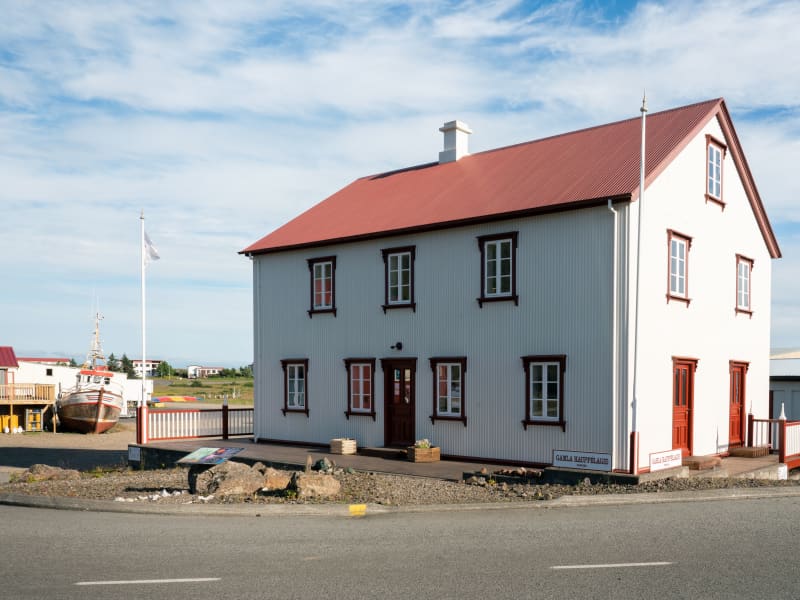
Breiðdalssetur
The centre features an exhibition on the use of drill cores to reveal the hidden depths of Iceland's geology, including the volcanic island of Surtsey and the immense sequence of lavas that make up Eastern Iceland. It also includes rooms dedicated to the legacy of scientists George Walker and Stefán Einarsson.
Walker was one of the 20th century's most prominent volcanologists. He conducted trailblazing research on the geological history of East Iceland, mapped ancient volcanoes (including the Breiðdalur Central Volcano) and gathered evidence that supported the then-new theory of plate tectonics. The linguist Stefán Einarsson, a native of the Breiðdalur valley, was a professor of linguistics at Johns Hopkins University in Baltimore, MD, USA. He was a productive scholar across many disciplines, particularly phonetics and literature, and most likely no one has ever introduced Iceland and Icelandic literature as thoroughly to the English-speaking world.
Opening hours of the exhibition during summer (June 1st to August 31st):
Sunday - Thursday from 12:00 - 16:00
Closed Fridays and Saturdays. Entry is free of charge.
Opening hours of the exhibition during winter (September 1st - May 31st)
There are no fixed opening hours during winter, but staff members are usually on site between 10 am – 4 pm on weekdays, and visitors are always welcome. Visits can also be arranged in advance by contacting mariahg@hi.is. Please drop by!
View
Other (3)
| Sænautasel | Jökuldalsheiði | 701 Egilsstaðir | 853-6491 |
| Rare Stone Collection | Lambeyrarbraut 5 | 735 Eskifjörður | 476-1177 |
| Nanna´s Memorial Museum | Berufjörður 1 | 765 Djúpivogur | 478-8977 |
